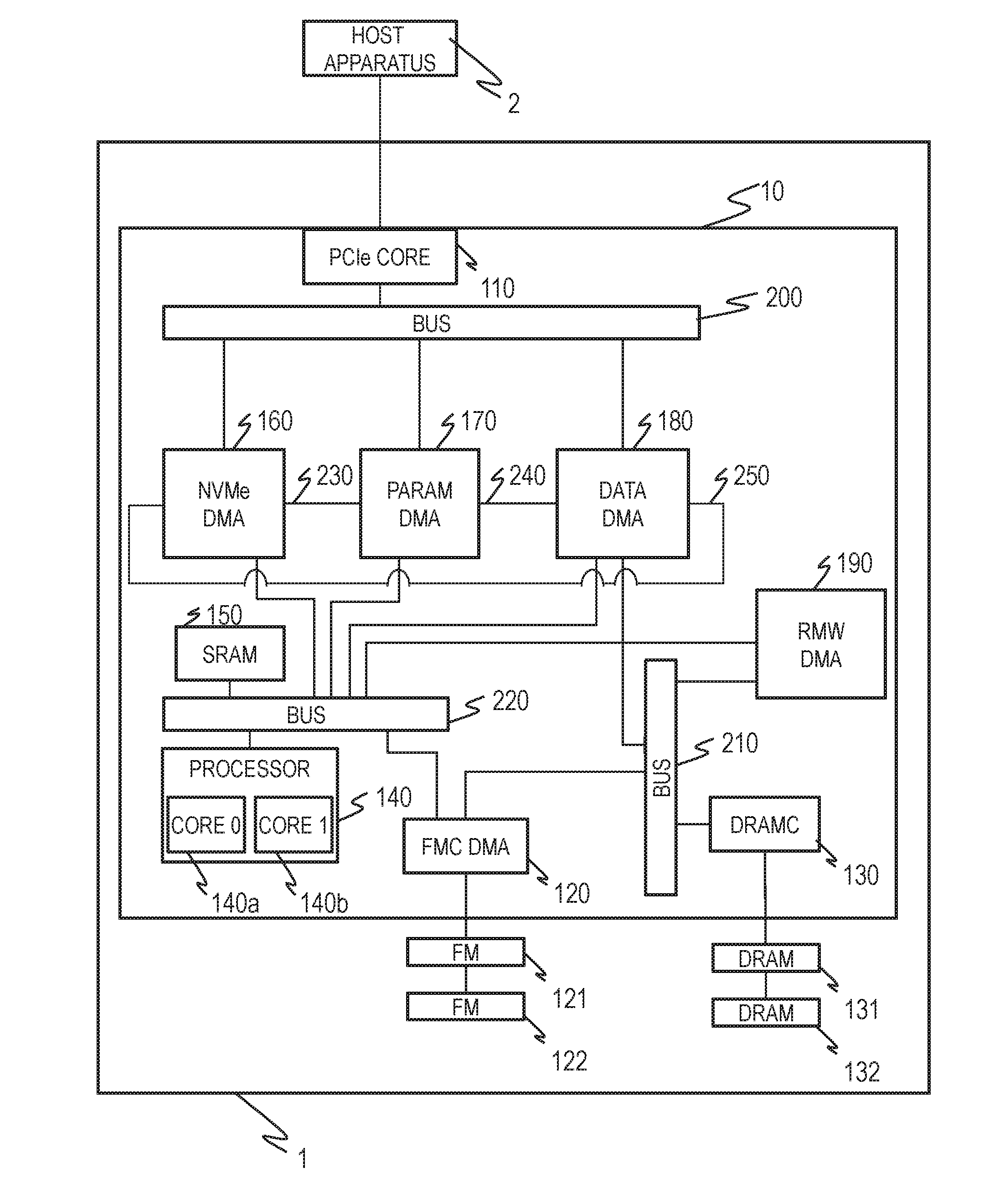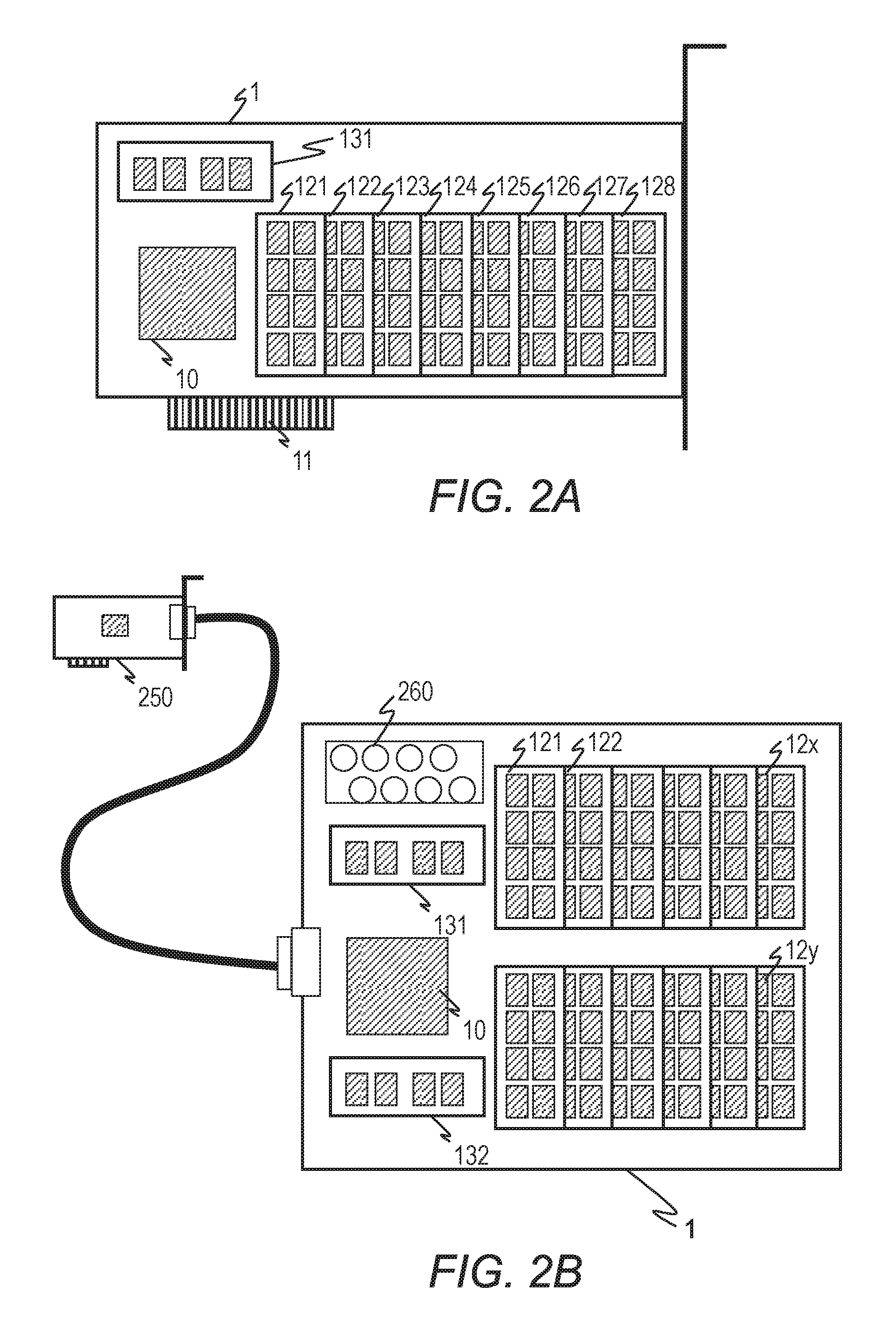Data memory device
a data memory and data type technology, applied in the direction of instruments, input/output to record carriers, computing, etc., can solve the problems of increasing power consumption and heat generation, unable to increase response performance unconditionally, and difficulty in raising response performance, so as to reduce the number of processing commands of the processor, reduce the number of processing commands, and operate efficiently
- Summary
- Abstract
- Description
- Claims
- Application Information
AI Technical Summary
Benefits of technology
Problems solved by technology
Method used
Image
Examples
first embodiment
[0041]This embodiment is described with reference to FIG. 1 to FIG. 12 and FIG. 19.
[0042]FIG. 1 is a block diagram for illustrating the configuration of a cache device in this embodiment. A cache device 1 is used while being coupled to a host apparatus 2 via a PCI-Express (PCIe) bus. The host apparatus 2 uses command sets of the NVMe protocol to input / output generated data and data received from other apparatus and devices. Examples of the host apparatus 2 include a server system and a storage system (disk array) controller. The host apparatus 2 can also be phrased as an apparatus external to the cache device.
[0043]The cache device 1 includes hardware logic 10, which is mounted as an LSI or an FGPA, flash memory chips (FMs) 121 and 122, which are used as storage media of the cache device 1, and dynamic random access memories (DRAMs) 131 and 132, which are used as temporary storage areas. The FMs 121 and 122 and the DRAMs 131 and 132 may be replaced by other combinations as long as d...
second embodiment
[0158]In the first embodiment, the basic I / O operation of the cache device 1 in this invention has been described.
[0159]The second embodiment describes cooperation between the cache device 1 and a storage controller, which is equivalent to the host apparatus 2 in the first embodiment, in processing of compressing data to be stored in an HDD, and also describes effects of the configuration of this invention.
[0160]The cache device 1 in this embodiment includes a post-compression size in notification information for notifying the completion of reception of write data to the processor 140 (S9460 of FIG. 9). The cache device 1 also has a function of notifying, at an arbitrary point in time, to the processor 140, the post-compression size of an LBA range about which an inquiry has been received.
[0161]FIG. 13 is a block diagram for illustrating the configuration of a PCIe-connection cache device that is mounted in a storage device in this invention.
[0162]A storage device 13 is a device tha...
PUM
 Login to View More
Login to View More Abstract
Description
Claims
Application Information
 Login to View More
Login to View More - R&D
- Intellectual Property
- Life Sciences
- Materials
- Tech Scout
- Unparalleled Data Quality
- Higher Quality Content
- 60% Fewer Hallucinations
Browse by: Latest US Patents, China's latest patents, Technical Efficacy Thesaurus, Application Domain, Technology Topic, Popular Technical Reports.
© 2025 PatSnap. All rights reserved.Legal|Privacy policy|Modern Slavery Act Transparency Statement|Sitemap|About US| Contact US: help@patsnap.com



